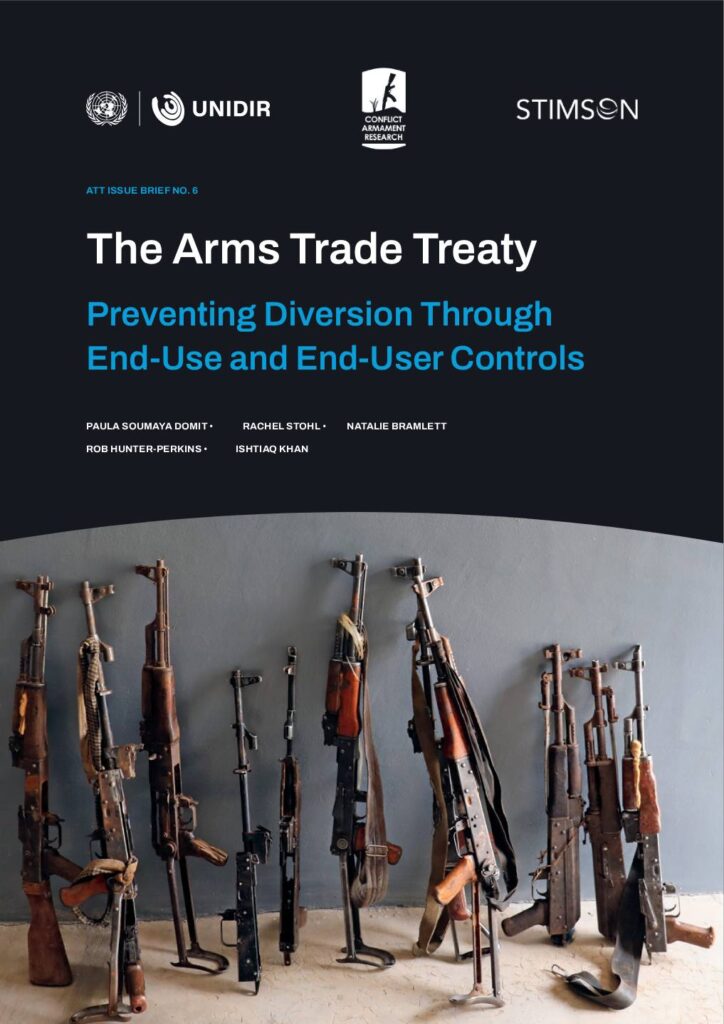Poorly implemented controls on the end use or end user of exported arms can contribute to the diversion of those arms. This issue brief is intended to support States Parties to the Arms Trade Treaty (ATT) in effectively implementing controls on the end-use/r, using end-use/r documentation as a key tool to prevent arms diversion. This is in line with Article 11 of the treaty and in support of the implementation of other treaty provisions.
The issue brief addresses existing discussions and good practices on end-use/r controls and how ATT States Parties use end-use/r controls, including documentation, within their own diversion-prevention measures. It also aims to improve understanding of underutilized potential and to identify options that could be pursued to strengthen control systems in order to more effectively implement the ATT’s provisions on diversion prevention and related efforts.
This brief is intended to inform the ongoing exchange of national implementation practices within the ATT, specifically the discussion on national import controls, and future deliberations on intersecting issues.
This is the sixth in a series of ATT issue briefs released as part of joint research by the research consortium composed of UNIDIR, Conflict Armament Research and the Stimson Center. Established in 2019, the consortium provides research, technical advice, expertise and tools to enhance knowledge of the ATT and facilitate dialogue among States, strengthen shared understanding of the impact of the treaty in addressing diversion risks, and identify avenues to promote effective policies and practices under the treaty.
Citation: Paula Soumaya Domit, Rachel Stohl, Natalie Bramlett, Rob Hunter-Perkins, and Ishtiaq Khan (2025), “The Arms Trade Treaty Preventing Diversion Through End-Use and End-User Controls”, issue brief No. 6, UNIDIR, Conflict Armament Research, and Stimson Center. https://doi.org/10.37559/CAAP/25/WAM/08.
